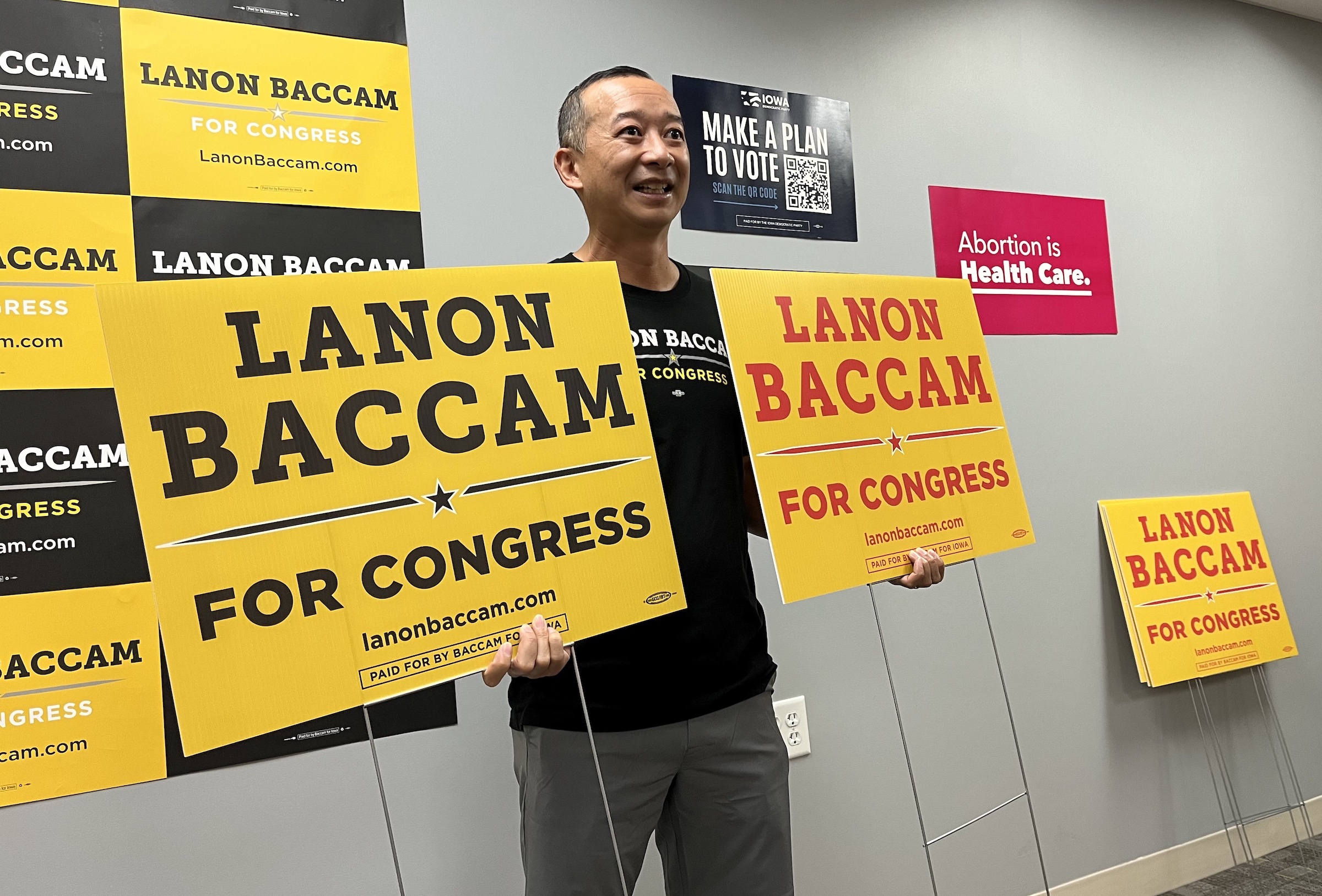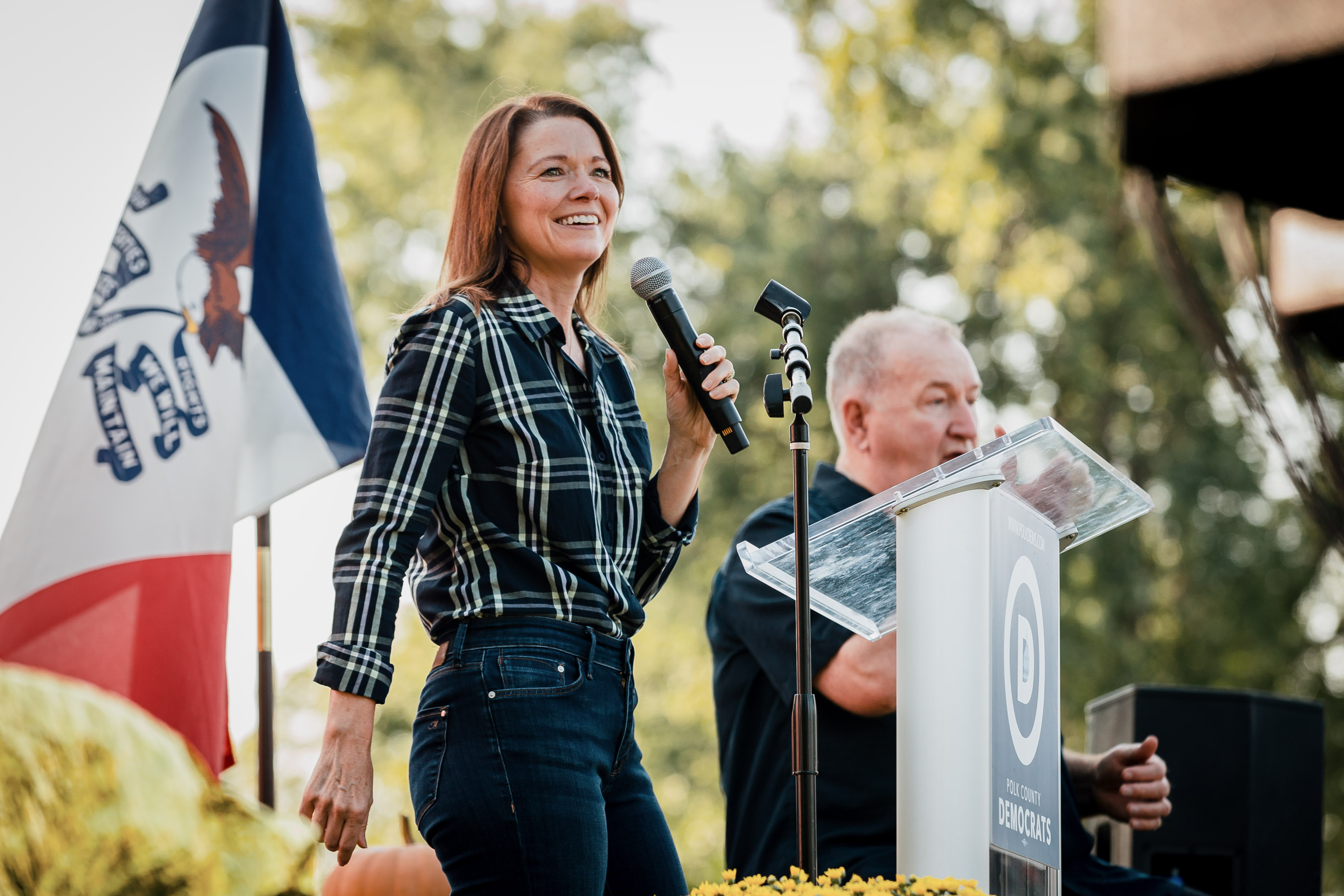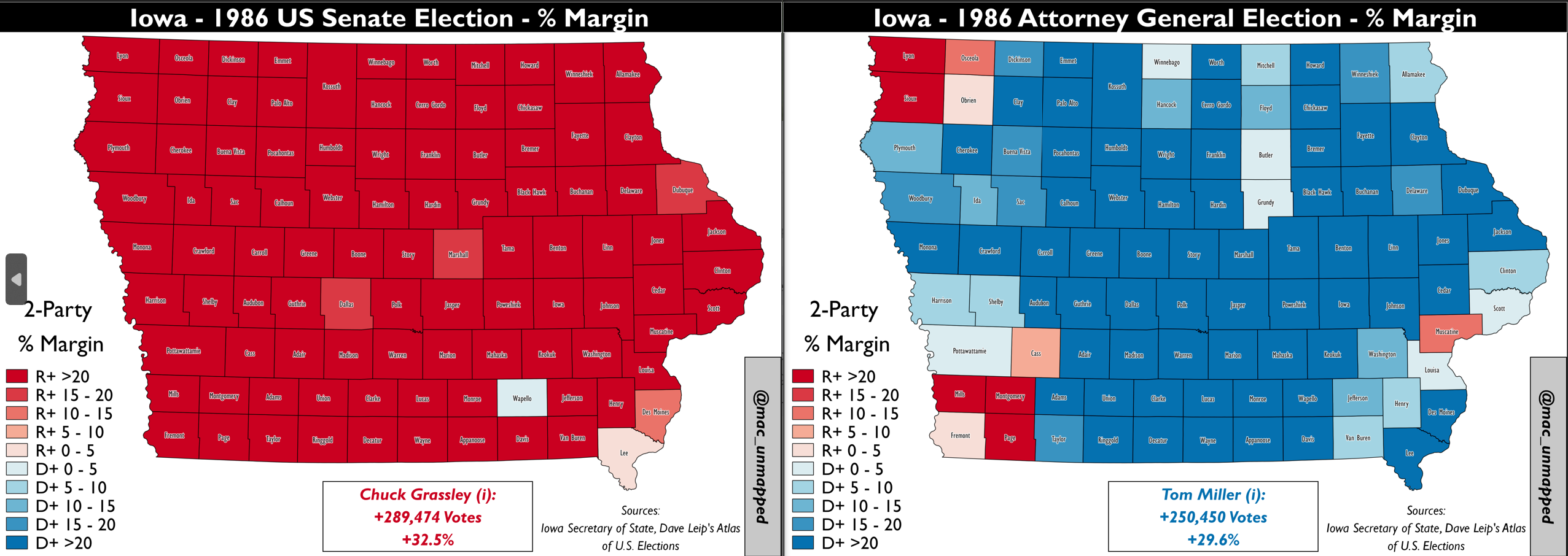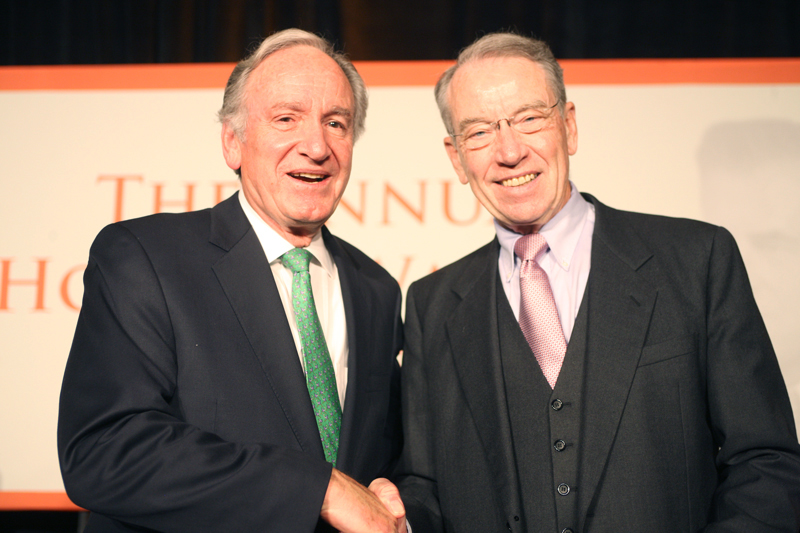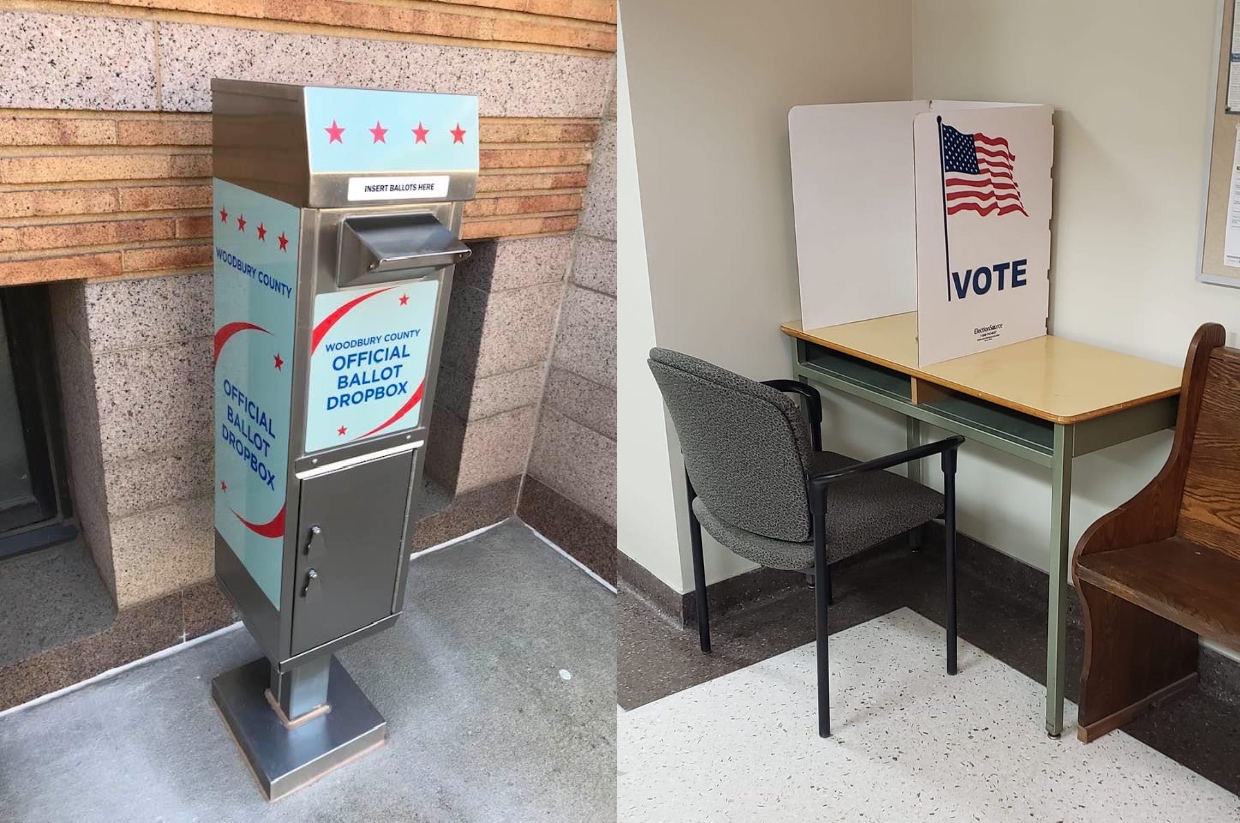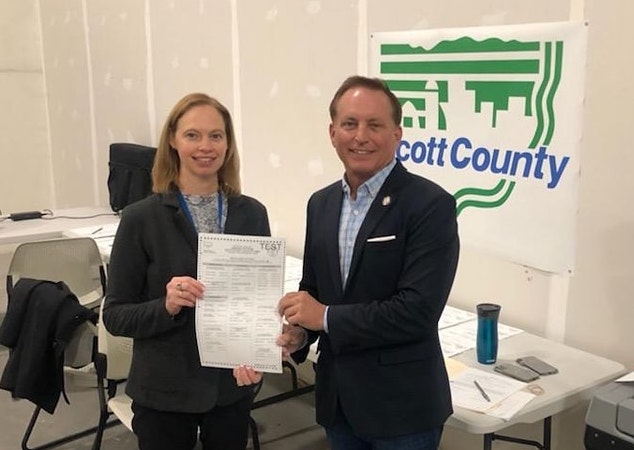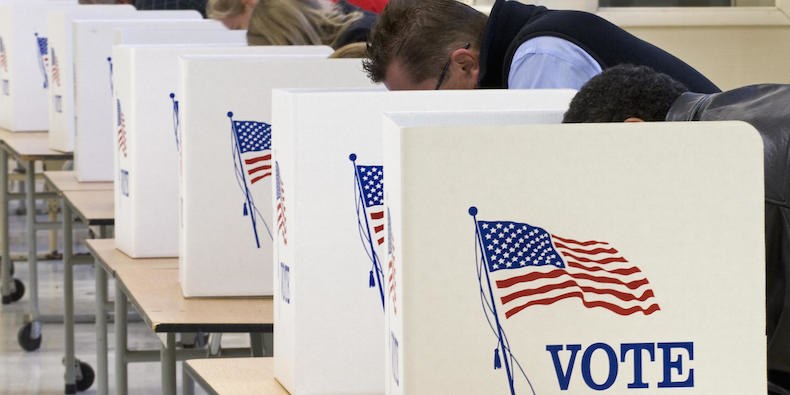Every Iowa Democratic candidate had reason to celebrate the latest Iowa Poll by Selzer & Co for the Des Moines Register and Mediacom, showing former President Donald Trump leading Vice President Kamala Harris by just 4 points (47 percent to 43 percent). But arguably none had more grounds for optimism than Lanon Baccam, the Democratic nominee in Iowa’s third Congressional district.
According to calculations by the Daily Kos Elections team (now publishing as The Downballot), Trump outpolled Joe Biden across the IA-03 counties by 49.3 percent to 48.9 percent in 2020, while winning the state by an 8-point margin. So if Harris trails by only 4 points statewide now, she likely leads Trump in the third district.
Assuming the Selzer poll is off by the margin of error (plus or minus 3.8 percentage points), and Trump has an 8-point lead statewide, the major-party presidential nominees may be roughly tied in the IA-03 counties.
In other words, Baccam won’t have to overcome strong headwinds at the top of the ticket in order to beat first-term Republican Representative Zach Nunn, who carried this district by 50.3 percent to 49.7 percent in 2022.
I’ve been thinking about what else needs to happen for the challenger to win in November.
Continue Reading...
